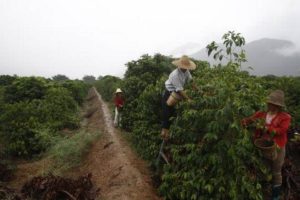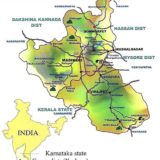By P.T. Bopanna*

Atul Aneja, correspondent for The Hindu newspaper, based in Beijing, in a dispatch from Yunnan in China, wondered: “But the question remains: why dabble in coffee, better known as a produce of Colombia, Brazil or Jamaica, and not tea, whose natural home is China?”
Aneja wrote: “Deep in the green interiors of Yunnan in China, better known for the origins of tea, it is now the turn of a coffee company to turn heads and raise eyebrows. Chinese farmers have taken to the new crop, which thrives in high-altitude areas of Yunnan province and commands up to three times as much money as tea.”
Helping out the Yunnan transformation from tea to coffee plantations are major foreign producers, including Seattle’s Starbucks Corp., and Switzerland’s Nestle. These multinationals are training farmers and buying beans from the region to meet the world’s growing thirst for coffee.
The emergence of new transportation networks is also helping Yunnan to export coffee, especially to Europe. The Chongqing-Xinjiang-Europe international railway has now become the logistical lifeline for coffee exports to Europe.
The Silk Road Economic Belt proposed by Chinese President Xi Jinping that focuses on connectivity and cooperation between Eurasian countries, primarily the People’s Republic of China, aimed at China’s push to take a larger role in global affairs, and the desire to coordinate manufacturing capacity with other countries, could have serious repercussions on Indian coffee.
According to International Coffee Organization, both the production and consumption of coffee in China have been growing at double-digit rates, and show few signs of slowing. It is estimated that China now produces more coffee than Kenya and Tanzania combined, and consumes more than Australia. However, the coffee production figures for China are not reliable because they are secretive in such matters.
Around 90% of China’s exports are in unprocessed, green form, with roast and soluble products. China exported coffee to 97 different countries worldwide, although 71% of these shipments went to just five countries. Germany is by far the biggest destination, accounting for 40% of total exports over the last five years, where the coffee is likely processed and re-exported.
Arabica production in Yunnan province has been growing substantially, and the Coffee Association of Yunnan has set a target of 4 million bags by 2020.
Chinese coffee is always sold at cheaper rates. China is presently concentrating on targeting big exporting countries like Vietnam, Brazil, and Colombia.
*P.T. Bopanna is the author of the book, ‘The Romance of Indian Coffee’, which won the Gourmand international award for the ‘best book on coffee in the world’. The Chinese government had rejected visa to Bopanna in 2015 to participate in the Gourmand awards ceremony at Yantai in China.























